Public land lease
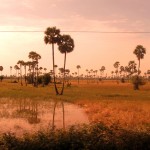
Public land leases are grants of state lands to private entities in the form of a contractual rental agreement. These leases often take the form of land concessions, in particular economic land concessions. They are often associated with land conflicts and disputes. ...
Fishing policy and administration
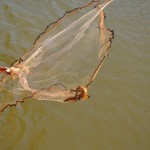
Young man fishing with a cast net on Siem Reap river, Cambodia. Photo by Brian Hoffman, taken on 12 January 2015. Licensed under CC BY-NC-SA 2.0.Fisheries management in Cambodia is divided between central and local governments. At the central level, the Ministry of Agriculture, Forestry ...
Ground water
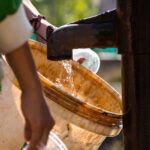
Cambodia relies heavily on its groundwater resources to overcome water shortages during the dry season. More than half of the population depends on it when enough surface water is not available. At a certain depth, the ground is saturated with water, and the upper surface ...
Decentralization and deconcentration
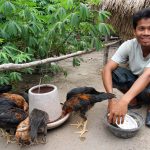
Decentralization and deconcentration are seen as “internally driven” reforms61, where the national government gradually delegates power, involving either administration or finance, to local governments to administer in their locality.27-year-old Sun Sovath supports his family by raising chickens, in Kampong Thom, Cambodia. Photo by World Bank Photo ...
SDG 13 Climate action
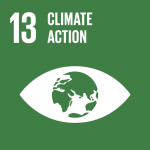
SDG 13 is aimed at taking urgent action to combat climate change impacts by developing the capacity of each country to mitigate climate risks and work towards adaptation. Least developed nations, landlocked countries and small island states are recognised as especially in need of support ...
Terms and definitions
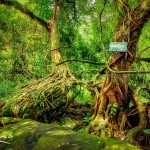
Defining and measuring forests is not an easy business. Definitions that initially sound very similar can turn out to have crucial differences. Understanding the terms is important for understanding forest use, forest cover, forest laws and policies and deforestation. ...
Administration
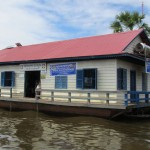
Cambodia’s sub-national administration consists of three tiers: capital city/province, municipality/district and sangkat/commune. Phnom Penh is the capital, and there are 24 provinces, 159 districts (including 26 municipalities and 12 khans), 1406 communes and 227 sangkats. ...
Small and medium enterprises SME
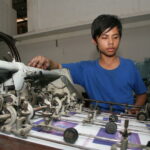
Small and medium enterprises (SME) have long been considered a vital driver to economic growth for developing economies. SMEs stimulate job creation throughout the country. Migration of employment to neighboring countries and the unemployment rate has significantly decreased due to a rising number of SMEs, ...
Climate change
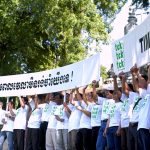
Voice from Cambodia–Time is running out. Photo by Oxfam International, taken on 21 October 2009. Licensed under CC BY-NC-ND 2.0.Climate change is the long-term change in the statistical distribution of weather patterns. While the climate of the earth has always gone through periods of change, modern scientific evidence ...
Protected forest
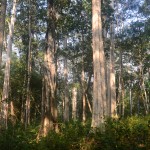
Protected Forests are generally established under individual sub-decrees, specifically for the purpose of protecting biodiversity and conservation. They are home to many endangered or threatened species. ...
Agricultural production

Rice field in Cambodia’s countryside. Photo by fmpgoh, taken on 15 July 2009. Licensed under CC BY-NC-ND 2.0The main products from the agriculture sector are rice, rubber, corn, vegetables, cashews and cassava. Unprocessed agricultural exports were projected to be more than 90 percent of total agricultural ...
Special economic zones

A Special Economic Zone (SEZ) is a defined area within a country that is subject to different laws and regulations than other areas of the country. These comprehensive industrial areas provide preferential incentives to investors and offer government import-export administrative support to facilitate trade. Though ...
Government services
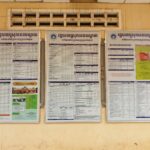
List of public services provided by One Window Service Office at Rotanak Mondol district hall in Battambang province. Photo by ODC team, taken on 28 February 2020. Licensed under CC BY-SA 4.0.Government services might be perceived as tools in pursuing the country’s development, and assuring ...
Energy

Cambodia has undergone rapid economic development in recent decades, with GDP per capita tripled between 1999 and 2013. However, mainly due to three decades of war and political turmoil which severely damaged the country’s infrastructure, the country still lacks the means required for energy sector ...
Electricity production
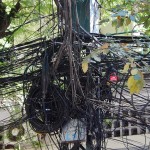
In Cambodia, electricity demands have been forecast to grow at 17.9 percent annually from 2012 to 2020.255 Distribution of electricity around the country has been a challenge: according to UN data, 79 percent of people live in rural areas,256 and the entire national population had grown ...
SDG 15 Life on land
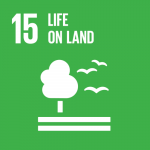
SDG 15 focuses on the sustainable use of terrestrial (land-based) biodiversity and ecosystems such as forests, grasslands, deserts and mountains and their interaction with freshwater systems. It aims to protect and restore their ecological function. The work includes applying sustainable land and forest management practices and ...
SDG 8 Decent work and economic growth
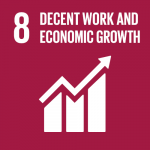
SDG 8 – “Promote sustained, inclusive and sustainable economic growth, full and productive employment and decent work for all” – has 10 general targets and 2 means of implementation targets.375 There are 17 indicators. Some of these targets are more relevant for Cambodia than others. For ...
Industries
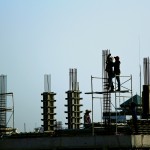
Industries in Cambodia (excluding extractive industries and mining) are mostly within the garment, light manufacturing, agricultural, construction and tourism sectors. The Royal Government of Cambodia has set directions to transform Cambodia into a middle-income economy by 2030 and high-income country by 2050, as mandated in ...
Taxation
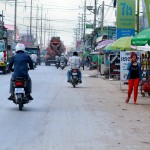
Heavy trucks on a street in Phnom Penh, Cambodia. Photo by Phalinn Ool, taken on June 15 2015. Licensed under CC BY-NC-ND 2.0The Cambodian government’s 2014–18 Revenue Mobilization Strategy aimed to enhance revenue administration and strongly increase the collection of taxes and other revenue. The ...




